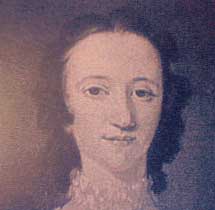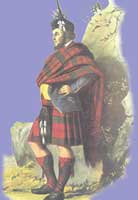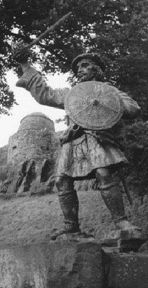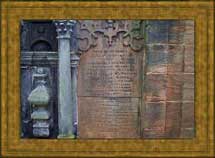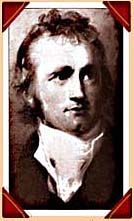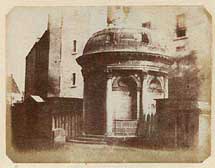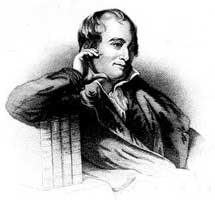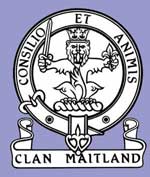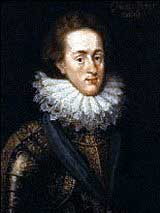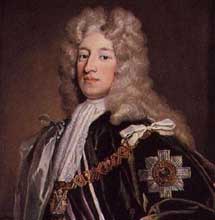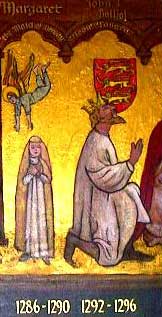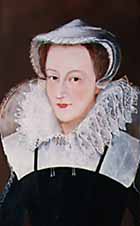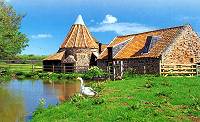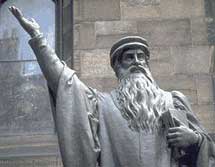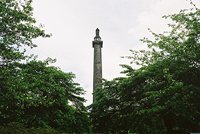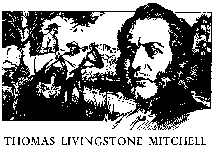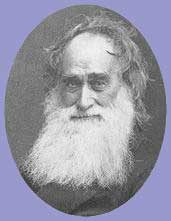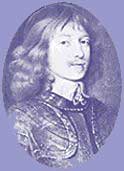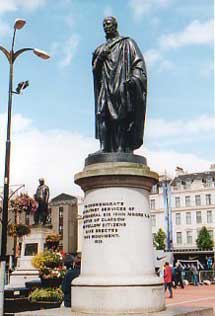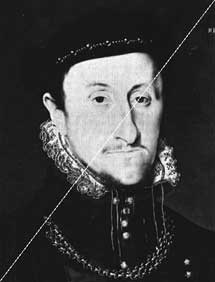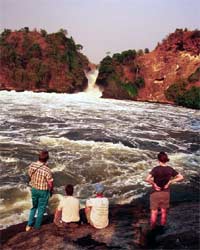Click below to find other Heroes & Famous Scots
|
|
| MacDonald, Alexander |
| MacDonald, Flora |
| MacDonald, John |
| MacGregor, Robert |
| Macintosh, Charles |
| Mackintosh, Charles Rennie |
| MacKenzie, Sir Alexander |
| Mackenzie of Rosehaught, Sir George |
| MacLure, William |
| MacQuarie , Lauchlan |
| Maitland, Sir Richard |
| Maitland, William |
| Mansfield, William Murray |
| Mar, John Erskine |
| Mar, John Erskine, Earl |
| Mar, John Erskine, Earl |
| Margaret Maid of Norway |
| Mary, Queen of Scots |
| McAdam, John Loudon |
| McGibbon William |
| McGill James |
| Meikle Andrew |
| Melville, Andrew |
| Melville,Henry Dundas |
| Melville, James |
| Mitchell, Sir Thomas Livingstone |
| Moffat, Robert |
| Monboddo, James Burnett |
| Montgomerie, Alexander |
| Montrose, James Graham |
| Moore, Sir John |
| Moray, James Stewart |
| Moray, Thomas Randolph |
| Murchison, Roderic Impey |
| Murdock, William |
| Murray, Lord George |
| Murray, James |
| |
| |
| |
| |
| |
| |
| |
| |
|
Heroes & Famous Scots (M) |
| MacDonald, Alexander (1695-1770) |
The Jacobite Struggle for Truth was not very long past sounding its death knell at Culloden when Alexander MacDonald published his first book of poetry in the year 1751. It was a book of Scottish Gaelic Secular Poetry, ‘Resurrection of the Ancient Scottish Tongue' He had published a Gaelic Vocabulary book for the Society for Propagating Christian Knowledge, ten years previous. |
|
| MacDonald loved his language and had taught for many years in Wales where he fought to keep the language in its original form. He could not be seen to support the Gaelic language too heartily as the political world in that time was very anti-Scot and the Highland clearances were still going on as was the murder of innocent Scots at the hands of the government forces. MacDonald was a staunch Jacobite supporter and was a cousin to the famous Flora MacDonald of Prince Charlie fame. His cousin had become one of the most famous Jacobite women ever known when she had secreted the Prince across the wild Scottish countryside and ‘over the sea to Skye' while at one point she had dressed him as ‘Betty Burke' to avoid the Government soldiers who were searching for him. They appeared to have been a very Jacobite family and loyal to the Stuart cause for he was said to have been with the Jacobite Army when it marched all the way to Derby , and left the city of London trembling at the thought of a Jacobite invasion. Alas the Jacobite army for some reason turned back at the very gates of that city and headed homewards to what would be the final large scale battle on the British mainland. Culloden would end the struggle for truth for the Jacobites of that period but it still continues to this day with the same passion supported by its many followers.. It is also stated that he actually taught the Gaelic to the Famous Bonnie Prince Charlie, as he went about the business of trying to restore the usurped throne from the clutches of an uncaring monarchy. Alexander Macdonald continued to write and publish his Jacobite views but tried to be careful not to upset the powers that be in London . Eventually his work came to their notice and the Government clamped down on his writing and had some of his Gaelic books publicly burnt, by of all people the public hangman, this definitely smacked of over-kill. MacDonald wrote of many diverse things, and subjects, for instance he writes about a river and its beauty, and about the fine women in his life, and about his ambition to be a father and to teach his children the secrets of the Gaelic language, but one of his poems is about the ‘Clap' a well known sexually transmitted disease, which is still a common illness in the modern world only we may have a different name for it. He would write about any subject at all. Alexander MacDonald (Alasdair Macmhaighstir Alasdair) There is no doubt whatsoever that he was the greatest Gaelic poet of all time, and a good true Scot, who followed his principals when it came to supporting the true monarchy of his country. Alexander MacDonald was a man of the people who fought tooth and nail to see his language kept as it should be and not the watered down English which many lowland Scots had started to use. It is thanks to people like Alexander that the Gaelic is still so popular today and there is a thriving Gaelic School culture all over Scotland and not just connected to the Highlands . |
|
|
| Back to Top |
| MacDonald, Flora (1722-1790) |
Flora MacDonald was probably the most well known female Jacobite of any time. Her name is still revered in Jacobite Society and she is looked upon with love and great affection for the part she played in Charles Edward Stuarts cause for truth and justice. She had been and ordinary Scottish woman asked to do an extraordinary task. Who could forget the stories of her escapades with the Prince in the heather and the comings and goings to Skye? What of the famous ‘Betty Burke' The Princes alter ego to see him safely away? Flora MacDonald was a truly remarkable young woman and a proud Jacobite. |
|
| When she was captured eventually by that well known infamous Fellow-Scot, Captain John Fergusson, she was imprisoned on a British ship. Fergusson was known as ‘The Scourge of the Highlands' and he was a traitor to his own people committing vile acts, and doing so in the name of a foreign monarch from England. Fergusson, we imagine could only have been motivated by money and greed for power to turn on his own people the way he did. Flora in the mean time gained her freedom and for a while became the toast of London society but later she was to marry and move to North Carolina in the United States of America . Her and her husband became part of a Scottish community and lived there for many years, but getting caught up in the American war of independence from the forces of England . The couple chose the wrong side and ended up moving back to Scotland where Flora was to die in the year 1790. Flora MacDonald could only be described as, a true Scottish and Jacobite heroine. |
|
| Back to Top |
| MacDonald, John (1624-1710) |
John MacDonald was one of the last poets who wrote in the classical Gaelic. He had been a contemporary of Mary MacLeod. He was exceptionally good at descriptive work in his poems. He was famous for his piece about the battle of Inverlochy in which he attacked the Campbells for the deceitful way they had murdered the young MacDonald Chief. Much of MacDonalds type of terseness and economy of style would be lost to Gaelic Poetry at the start of the eighteenth century. He was a staunch supporter of the Jacobite Struggle for truth and wrote many works about this. |
|
| When Charles II was back on the throne he was appointed Poet Laureate to his court, in Scotland . He also composed poetry for the usurper King William of Orange and his equally guilty wife Mary, unknowing at that time the Kings total disregard, and indeed treachery for anything Scottish. At the union of Scotland and England on the black day in 1707 Macdonald was furious that what Scots had fought, and indeed died for, had been bought with English gold from the pockets of William the Third King of Orange and hater of Scots, as he had proved with his handling of the Darien Scheme. John Macdonald was a true patriot and hero Scot.The picture depicts MacDonald of Keppoch, who was a relation of John MacDonald. |
|
| Back to Top |
| MacGregor, Robert (1671-1734) |
Rob Roy MacGregor, the name conjures up Highland warriors and great glens, a wee bit of sheep stealing and cattle rustling. Running through the heather and over the hills to freedom and another great adventure for the famous Rob Roy. What was the reality of Robert MacGregor's life to the romantic picture penned by the great writer Sir Walter Scott? Rob Roy was an outlaw and a thief, which was how Highlanders survived in those days. Rob Roy lived through the time when to be called MacGregor was a criminal offence and he was forced to change his name to Campbell, who were his nearest kin and neighbours. What kind of people would make a name illegal? Well that was the type of people Rob Roy dealt with on a daily basis. |
|
His father had served the Jacobite King James VII, when his crown had been usurped by the Dutch opportunist, William III of Orange. Rob Roy had Jacobite sympathies but actually played off both sides to make a living. He hounded the lands and property of Montrose because he had burnt Rob's house down when seeking payment for a non-existent debt. Rob Swore revenge and he got plenty of it too. He was arrested eventually when he left the Highland line which had been his protection for many years. Rob served some time in Newgate prison but he narrowly missed being sent to the Barbados islands as a convict.
Rob Roy may not have been the romantic freedom fighter portrayed in writing or film but he definitely was a true patriotic Scotsman. The Macgregor family saying was always "Royal's My Race" |
|
| Back to Top |
| Macintosh, Charles (1766-1843) |
People all over the world should be grateful to Charles Macintosh. Well people who live in a wet climate should be maybe a little more appreciative to this Scottish inventor. He was the man who with help from another inventor produced wet resistant clothing so that people could go about in our climate in comfort. The Scot had been trying to find uses for the waste products of the gasworks, where he worked which were now springing up in industrial Scotland . |
|
| He noted that coal-tar naphtha, which was used for lighting among other things, He had noticed that it was used especially in the travelling circuses and fairs. Mackintosh found that by painting one side of wool cloth with the rubber preparation and then placing another thickness of wool cloth on top, Macintosh produced his waterproof fabric. It was an amazing substance and really kept the water out. When Vulcanised rubber became available Mackintosh coats could not be beaten in their time. Mackintosh was a great Scottish inventor. The picture depicts Charles Mackintoshes last resting place. |
|
| Back to Top |
| Mackintosh, Charles Rennie (1868-1828) |
Charles Rennie Mackintosh was born in Townhead Glasgow, and was one of eleven children His designs are known all over the world, and people are still drawn to Glasgow to see dazzling examples of this amazing Scottish architects work. There are still plenty of places in and around Glasgow where you can view Mackintoshes creations and some of them are still used on a daily basis. |
|
| You can go and admire the Glasgow School of Art, where he met his wife Margaret MacDonald, or the Mackintosh Church at Queens cross in Maryhill Glasgow, the Willow tea Room and Scotland Street School are all fantastic examples of this great mans work. He achieved an international following for his Art Nouveau style and was the foremost designer in Britain of that period. His work is in demand today every bit as much as in his own lifetime. He was known as one of ‘The Four' who worked collectively and produced “The Glasgow Style” Charles Rennie Mackintosh was a great Scottish architect and designer. |
|
| Back to Top |
| MacKenzie, Sir Alexander (1755-1820) |
Alexander MacKenzie was born in Stornaway in the Outer Hebrides off the North West coast of Scotland . He became a famous explorer and adventurer. The great MacKenzie River , which runs for a thousand miles through Canada was charted and used for fur trapping by this amazing Scotsman. He recorded every inch of its length from the ‘ Great Slave lake ' until it hits the Freezing waters of the Artic Ocean . After immigrating to North America, MacKenzie began his own trading company in the city of Montreal that later amalgamated with the North West Company to become a serious, and main rival to the Hudson's Bay Company, which up until that time had no competition worth bothering about. MacKenzie and his crew of twelve men started their great expedition in the year 1789; they set off in three small boats, and managed to set up trading post at Fort Chipewyan on Lake Athabasca . |
|
Four years later, MacKenzie crossed the Rocky Mountains from the trading post in the east all the way to the Pacific Ocean in the west, travelling through what is now British Columbia -- both journeys are said to have been the first known transcontinental crossing of America north of Mexico . He and his party survived by eating pemmican, a dried lean meat from a large game animal pounded to shreds and mixed half and half with melted fat, bone marrow and wild berries. Not exactly steak and eggs but enough to survive on. He returned to Scotland and began a writing career. He was knighted for his adventures by the British monarchy in the year 1802.
He was a real Scottish adventurer. |
|
| Back to Top |
| Mackenzie of Rosehaught, Sir George (1636-1691) |
Sir George Mackenzie, (Bloody MacKenzie) as he was known by the Covenanters who suffered torture and death at his hand. He had been born in the city of Dundee and educated at St. Andrews , Kings College , Aberdeen , and Bourges . He was a lawyer and became an advocate in the year 1659; He was also elected a Member of Parliament in 1669, and then went on to become Lord Advocate in 1677. |
|
He was a ruthless individual and stood for what he believed in, unfortunately he could not let other people have the same rights as himself. He did establish the noted Advocates Library. He used the law to try and force Scotland to accept the English religion and done everything in his power to outlaw Presbyterianism. MacKenzie was also a novel writer and produced a book named ‘Aretina'
Ironically he is buried in Greyfriars Graveyard not far from the graves of the people and patriotic Scots that he had executed. A Scottish Hero? |
|
| Back to Top |
| MacLure, William (1763-1840) |
The very first true geological map of any part of North America and one of the earliest such maps compiled was the work of William MacLure. He was born in the town of Ayr on the west coast of Scotland, MacLure became very wealth when he set up and import/ export business. He had travelled to New York for a short time but soon returned home. After another brief stay in the United States of America , where he became an American citizen, he returned to Europe to indulge his new love of geology. MacLure wanted to travel throughout the continent to collect geological specimens from all over and textbooks on the subject. |
|
Upon his return, MacLure investigated the Appalachian Mountain range (at that time practically the Western frontier of the nation) publishing Observations on the Geology of the United States in 1809. He also helped found the Philadelphia Academy of Natural Sciences, which he generously endowed and in which his valuable library is now safely ensconced.
A great Scottish geologist. |
|
| Back to Top |
| MacQuarie , Lauchlan (1761-1824) |
Following service with the British army in India , North America , the West Indies and of course Europe , Lachlan MacQuarie who was born in Ulva, Argyll, was appointed Governor of New South Wales, Australia in the year 1809, He replaced the notorious William Bligh, of ‘Bounty' fame who had been overthrown by the New South Wales Corps. MacQuarie was very concerned with the rights of convicts, The Scotsman immediately began a program of public works construction and town planning, working closely with the Emancipists (freed convicts) whose cause he took up. The ex-convicts liked and respected him for he was the first person to show any concern for their plight.
|
|
| The enlightened governor MacQuarie wrote building codes to transform Sydney from a bunch of shacks into a properly planned town, the place had been written off by Bligh as a rat infested hole which was too good for the people who lived there. The town now had a Georgian hospital and other public brick buildings. He also arrested the leaders of the Rum Rebellion, who were making life a misery with their money grabbing ways and the violence which they used to get their way. MacQuarie , appointed conscientious officials and did his best to turn New South Wales from nothing more than a huge jail into a proper colony of the Crown. He formed a factory for women to earn some money as they were treated like cattle in the new World of Australia. He made himself unpopular with the establishment when he tried to help the indigenous people to retrain as farmers. They were used to using the natives in any way they could as cheap and often unpaid labour. He was a great Scottish social reformer. |
|
| Back to Top |
| Maitland, Sir Richard (1496-1586) |
Richard Maitland was an outstanding Scottish poet lawyer and Statesman. He had Jacobite tendencies and served both James V and the more famous Mary Queen of Scots, in several different capacities. Sir Richard Maitland was also known as Lord Lethington, and he lived to the ripe old age of ninety, which was remarkable in that time period. Sir Richard had unfortunately started to turn blind at the age of sixty one, but he kept himself busy as a Judge and with his penning and collecting of Scottish Poetry. People tended to call him “Manly Maitland” and in the year 1828 there was a club founded in appreciation of this great Scottish poet, and to promote the poetry and literature that Maitland himself had written |
|
| . His collection had been named ‘ The Maitland Folio MS' The folio contains some of his own work but is actually like a history book of the troubled times that he witnessed in his long life. Included in the folio are works by; William Dunbar, Gavin Douglas and many more writers and poets of that time span. Richard Maitland was a great Scottish Poet and collector. The crest depicts the Maitland's, as there was no photograph of Sir Richard available |
|
| Back to Top |
| Maitland, William (1525-1573) |
William Maitland was another person who was known as “Of Lethington” He was a staunch supporter of the Jacobite struggle for truth and right and supported Mary Queen of Scots to regain her stolen crown. He was always loyal to Mary but sometimes would go against he wishes if he thought it was for her own good. His main ambition was to have Mary replace Elizabeth on the throne. |
|
| He was an ardent Catholic but joined with the Scottish Protestant Lords to get rid of the French influence in Scotland , which he detested because in his opinion it went against Mary. He was hated by the Protestant Lords, but became Secretary of State under Mary Queen of Scots in the year1560. He was also known to have supported Mary in the murder of Rizzio. Mary fled to England in 1568, and Maitland done his utmost to restore her to power, he even cut ties with the Regent the Earl of Moray, during the infancy of James VI. After years of intrigue, including imprisonment, Maitland unsuccessfully led Mary's supporters against those in favour of James: he died in prison not long after that but at least died a loyal Scotsman.The picture depicts Craigmiller castle, where Maitland's Queen fled after the murder of Rizzio and it was also said that Maitland along with others planned the murder of Darnley in this very place. |
|
| Back to Top |
| Mansfield, William Murray, 1 st . Earl (1705-1793) |
William Murray Mansfield is from the famous town of Scone near Perth in Scotland . This place was the town where Kings were made. The famous Stone of Scone which the English King Edward I, thought he stole many years ago and which was returned recently, was used to crown the monarchy of Scotland . Mansfield was Chief Justice of the Kings bench in the years 1756 -1788. |
|
And individually had a huge amount of influence on the formation of Anglo- American commercial law. Due to his pioneering work in the field, he helped make the international law of commerce an integral part of the general law of Great Britain . The vast growth of international trade in the late 18th century had made the reform of Britain 's laws absolutely essential. Not only did this former solicitor general, attorney general and acting leader of the House of Commons, shape the law of bills of exchange, promissory notes and the bank check, he also established the law of marine insurance, a new field of jurisprudence.
So William Murray Mansfield was a great financially gifted Scotsman. |
|
| Back to Top |
| Mar, John Erskine (d1572) |
John Erskine Mar, there are few more illustrious names in the annuls of Scottish history. The family of Mar have held the title Earl of Mar from the mid sixteenth century. This John Mar was to play his part in the downfall of Mary Queen of Scots in favour of her son James VI of Scotland , First of England, who in the year 1603, was to become King of Great Britain.
|
|
| Mar was of a moderate personality and being a Protestant he tried his best to stop any bitterness between the Protestant Nobles and the Catholic supporters of the Regent, Mary of Lorraine, who was Mary Queen of Scots mother. It was not long until he was being asked to join the Privy Council, under Mary's rule in the year 1561, he was also asked to be guardian of the infant James VI. Things began to change with Mar and he noticed a lot of things which he did not agree with, so he began plotting against Mary to have her deposed and her son installed in her place. This was exactly what happened and when James became King, John Mar became Regent to him. He was truly a great Scotsman who cared about his people. The picture is of a grown up James VI who John Mar looked after as regent. |
|
| Back to Top |
| Mar, John Erskine, Earl 1588-1634) |
John Erskine took over from his father as guardian to the young James VI in the year 1578. He had grown up with the child King in Stirling Castle and the two knew each other very well. John mar felt that he was facing a challenge in his influence to the King and so he moved James to Ruthven castle near Kingussie, but unfortunately for John Mar, James escaped and it was John, who had to go into hiding, eventually running to England and the court of Elizabeth the first. It was known that the young King missed his childhood friend and in the year 1585 John Mar returned to Scotland and his old friend James VI. He was appointed one of his royal ministers and guardian to his own son, Prince Henry. James VI of Scotland First of England eventually succeeded Elizabeth to the throne of Great Britain . |
|
| For many years he continued to have a huge influence on decisions made about Scotland and her people, always trying to improve the Scots lot in life. He was a good Scotsman. The picture depicts Henry Frederick Stuart who John Mar was guardian too. |
|
| Back to Top |
| Mar, John Erskine, Earl (1675-1732) |
John Erskine mar became known as ‘ Bobbing John' because of his frequent changes of allegiance to the differing political parties at the time. He carries a very prestigious name in Scottish history, but unfortunately for his family and for Scotland he was not a great ambassador for the name Mar. He had supported the ‘Old Pretender' and had fought at the battle of Sheriffmuir, but had been easily defeated by John Campbell, Duke of Argyll and opposition to the rightful rulers of Scotland , in the year 1715. He was at the least not a traitor to the Jacobite King as were a few other Scottish Clans. When the struggle for truth and right collapsed for that time period, Bobbing John, headed back to France , but alas his intrigue and double dealing saw him fall out with the court of James, and he was banished from it forever.
|
|
| He was not a very good role model for Scots anywhere, and is only included here for his family name and his Jacobite sympathies, |
|
| Back to Top |
| Margaret Maid of Norway (1282-1290) |
The infant Queen Margaret was the last ruler of the house of Dunkeld. Scotland had been in turmoil with the death of Alexander III, and was left without an obvious heir. Margaret after some lies about being also pregnant from her Step-grandmother Yolande, the infant grand daughter of Alexander III, was now Queen of Scots, with a regency of six people. She had some powerful opposition in the form of two great Scots namely John Baliol, and the most famous of Scotland 's freedom fighters Robert the Bruce. The Scottish nobles watched the prancing and parading of Balliol and the Bruce, and decided that they would try to avoid a civil war by asking Edward I of England to mediate. This suited the shrewd and evil Edward and he gladly done their bidding constructing the ‘Treaty of Brigham' which promised the Queen in marriage to his son Edward and that also Scotland during all this would remain independent.
|
|
| On her way to Scotland Margaret was to die during a stormy voyage which saw her landed on Orkney. With her death the Canmore Dynasty was finished. This threw Scotland into a frenzy of claims for the throne which was eventually won by the mighty Bruce after many years of struggling and fighting.The depiction is of Margaret Maid of Norway and John Balliol. She may have only been a child but her life touched the whole of Scotland's History and even filters through to todays modern times. |
|
| Back to Top |
| MARY,QUEEN OF SCOTS (1542 - 1587) |
Mary is the most famous woman ever to come out of Scotland , and is a major part of Scotland's history. Who does not know the story of the Queen of Scots? Mary was an enigma, a woman of many passions and a heroine to most. She cuts a tragic figure through the portals of time and people can still feel the sadness of Mary when they visit certain places she frequented. The historical question which will be asked forever is; did Mary kill her Husband? Nobody will ever truthfully be able to answer that. In her lifetime George Buchanan would hound her about the murder right up until the time of her execution. Mary had been born at Linlithgow Palace in 1582; she was daughter to James V, and became Queen when she was six days old because her father had died. During this time known as ‘The Rough Wooing' it was thought prudent to send Mary to France for safety.
|
|
| Mary had been married to the French heir Dauphin Francis II but a year later he was dead at the age of fifteen. Mary decided to return to Scotland . Much was to happen now. Mary was thought to be a better choice for Queen as Elizabeth 's mother Anne Boleyn, had some doubt hanging over her about her marriage to Henry as to whether it was in fact legal. Much of Mary's problem was that she totally refused to acknowledge the protestant church and secretly conducted her catholic mass. She went on to marry her first cousin Lord Darnley and this turned out to be her biggest mistake to date. Scottish Protestants were up in arms and worried that the catholic marriage would mean a return to Vatican rule. Many of them thought that her favourite courtier Riccio was in fact a Papal spy sent to try and woe the country back to its old religion. In the year 1556 Riccio was murdered by a group of Protestant Lords and Darnley himself was implicated. Mary went on to give birth to her son James VI of Scotland , who would become King of Great Britain and also sign his mothers death warrant. When Darnley was murdered by unknown assassins, Mary wed Bothwell, and this was too much for the Protestant Church and she had to abdicate and flee to what she thought was safety in England with Elizabeth I. After Mary's execution, finally ordered by Elizabeth following a series of ill-conceived plots against the English Queen, the accession of a Protestant sovereign finally brought to an end the hopes of a return to Catholicism that Mary had wanted indeed desired all her tragic life. It also ended the nasty attacks on the Queen Mary of Scots herself. Even leading Protestant writers now began to depict her as an unfortunate Queen whose downfall had been brought about more through the chances of fortune than by defects in her moral code. More than one historian has pointed out that Mary's modern depiction as a handsome, brave, and proud woman, defeated through ill-circumstance and powerful enemies, seems to bear out her personal motto: " In my end is my beginning ." Mary Queen of Scots a truly great Scot. |
|
| Back to Top |
| McADAM , JOHN LOUDON (1756 - 1836) |
Perhaps the name of John McAdam is as well-known throughout most of the world as any other Scot, for he was the inventor of the road surface named after him. After returning to Scotland in the year 1783 from New York City , where he had made a considerable fortune employed by his uncle who was a merchant in that city, McAdam bought an estate at Sauhrie, Ayrshire. He was to become a road trustee for his district and on surveying all the roads , he decided that everyone of them needed repair as they were in a dangerous state. He started experimenting with various elements to see what he could develop.
In 1798, McAdam went to live in Cornwall where a government appointment allowed him to continue his experiments. He was Surveyor General in the year of 1815, in Bristol , England . His solution was simple enough: roads should be raised above the adjacent ground for good drainage. |
|
They should be covered with large rocks and then smaller stones, the whole mass to be bound with fine gravel or slag His method was actually exactly what the Romans had used many years ago when they built the great roadways throughout Britain . His success in transforming the old, rutted dirt tracks that passed for public highways vastly improved travel and communication throughout the country and led to his appointment as General Surveyor of roads in Great Britain.
In modern road building, McAdam's methods are supplemented by the use of oil or a bituminous binder. He documented his pioneering work in Remarks on the Present System of Road Making (1816) and Practical Essay on the Scientific Repair and Preservation of Roads (1819). His methods were quickly adopted in the United States and many other countries worldwide. McAdam was a truly great Scotsman |
|
| Back to Top |
| McGIBBON , WILLIAM (1695 - 1756) |
William McGibbon, became Scotland's leading native born composer of violin music in the first half of the eighteenth century, he born in Edinburgh, in the year 1695. McGibbon was greatly influenced in his early career by the Italian maestro Archangelo Corelli; both becoming as famous for their playing as much as for their compositions, which were also exquisite. |
|
| Many of McGibbon's folk tune setting showed that Scottish peoples music, and Italian baroque could be successfully combined and their individual flavours still remained intact. He was the leading violinist to the influential and very famous Edinburgh musical Society, thanks to which, many of his sonatas and folk music settings survive to be enjoyed by modern music lovers. He was a great Scottish Violinist and composer. The violin depicted is the type used at the time McGibbon was playing. |
|
| Back to Top |
| McGILL, JAMES (1744 - 1813 ) |
James McGill was born in Glasgow , and decided that his future lay elsewhere so he took himself to the wilds of Canada . He became a fur-trader and merchant. The next part of his life was spent in Politics, within the Legislative Assembly of Lower Canada; James McGill was to represent the westward of Montreal . This was in the years1792-1796, and also 1800-1804. He was a loyal type of person and took Britain 's part in the War of Independence with the Americans. He became an honorary Colonel in the Regiment of Montréal Infantry Volunteers.
|
|
| James McGill was to go on and become the founder of the largest and best known University in the world for its achievements in Chemistry, Biology and medicine. The university was to take his name, and would be a private non-denominational institution called McGill University. |
|
| Back to Top |
| MEIKLE , ANDREW (1719 - 1811) |
Andrew Meikle, was from Houston Mill, near Dunbar in south east Scotland , where he spent most of his life as a millwright. Meikle helped change the face of agriculture forever, with his dynamic new invention. Since the beginning of time, man had separated the husks from grain by beating them by hand, and it was thought there was no other way to do this. |
|
| Meikle invented a threshing machine in the year 1778. Though this first attempt failed, he kept trying and adapting the device, by making improvements to a machine that had been invented from Northumberland. Meikle constructed a thresher that used a strong drum to beat, rather than rub the grain. It worked perfectly for him, and Meikle took out a patent in the year 1788. He also devised a method of rapidly furling the sails of windmills to prevent storm damage. Andrew Meikle was a great inventor and a good Scotsman.The picture is of Preston Mill where Andrew Meikle has much of his work stored in its original condition. |
|
| Back to Top |
| MELVILLE, ANDREW (1545-1622) |
Andrew Melville succeeded John Knox as the leader of the Scottish Reformed Church, He had been born in Baldovie, Angus. Melville was intent on taking it one step further than the sword-wielding reformer by replacing its bishops with local presbyteries. When he reached his early twenties he had mastered all the great languages of the world. In The year of 1574, he set out to reform its schools.
|
|
He was to become principal at the University of Glasgow and when he left there he took up a post at St. Mary's College at St. Andrews in Edinburgh . Melville was key person in introducing new educational methods from the Continent as well as attracting scholars from all over the world. When the world famous John Knox died in the year 1572, Melville continued to press for freedom from state control of the Reformed Church. For his book ‘The Second Book of Discipline' which was published in the year 1578. Melville was virtually banished during the years 1584 to 1585, but its contents later became incorporated in the act of religious settlement of 1595.
He still opposed James VI of Scotland , first of England , and continued to move towards church reform despite James attempts to undermine them; his efforts led to his imprisonment. Andrew Melville was summoned before James VI, who had become James I of England , Melville's continued defiance of the king, and his composing a satiric poem led him to the Tower of London for four long hard years. He then accepted a chair in biblical theology at the University of Sedan , in France , remaining there for the rest of his life. His work on behalf of the Scottish Reformed Church, however, had not been totally in vain. The Presbyterian form of worship that Melville introduced, was to stay in Scotland and over the years grow in strength.The statue is of the famous John Knox Andrew Melville's predecessor. Melville was a man of integrity and a great Scot. |
|
| Back to Top |
|
MELVILLE, HENRY DUNDAS, 1st Viscount (1742 - 1811) |
In late eighteenth-century Scottish politics, Henry Dundas Melville, was such an amazingly powerful figure, that he was able to control the elections in thirty-six of the fifty-five Scottish constituencies. Henry was born the son of Robert Dundas, Lord Arniston, President of the Court of Session, he was even jokingly referred to as "Harry the Ninth, uncrowned king of Scotland." |
|
William Pitt, created him Lord Advocate of Scotland , Dundas kept the majority of Scottish members loyal to the government at Westminster , being handsomely rewarded for his efforts, progressing from Lord Advocate, through President of the Board of Control for India , Treasurer of the Navy, to Home Secretary and Secretary of War. Henry Melville was in this hugely powerful position for about thirty years, and must have made a personal fortune in that time.
To his credit, Dundas attempted to put right some of the wrongs perpetuated upon his beloved Scotland in the past, especially those suffered by the Highlanders at the hands of the Hanoverians. His efforts led to the repeal of the nefarious Act of 1746 that had forbidden Highland dress as "the garb of sedition" and the playing of the pipes. In 1748, Dundas was able to have many of the forfeited Jacobite estates returned to their rightful owners. Perhaps Melville was a Jacobite at heart or maybe just a secret sympathiser? Scotland will never have the true answer to that question, he was never the less a great Scotsman. |
|
| Back to Top |
| MELVILLE, JAMES (1556-1614) |
We have thousands of information about the Scottish Church reformers in the revolution that took place during the mid-16th Century. |
|
| Much of what we have is mainly due to the work of James Melville, Presbyterian reformer and educator. As with Andrew Melville, James's opposition to the imposition of Episcopal government in Scotland, ordered by James VI, of Scotland James I of England led to his activities being proscribed, but his book, ‘The Diary of Mr. James Melville, written during the years 1556-1601, and published in the year 1829 is a most valuable source on the growth of the Presbyterian movement in Britain.The picture is of St. Andrews University where Melville spent so many happy days in his youth. He was a great religious figure in Scotland. |
|
| Back to Top |
|
MITCHELL, SIR THOMAS LIVINGSTONE (1792-1855) |
Thomas Mitchell was a surveyor and in the year 1827 he moved to the great new colony of Australia and was appointed Surveyor General. This title meant he was responsible for the laying out of bridges, roads, and even whole towns. He was an ex army man who was also known as a bit of a hothead Mitchell was a very talented artist, and he spent a lot of his spare time pursuing his hobby, he also wrote poetry. He was a qualified geologist and botanist. Mitchell wrote books about his journeys and these were very popular. |
|
| In the year 1838, Mitchell was knighted and became Sir Thomas Mitchell. He was responsible for exploring vast areas of south-eastern Australia and opening up new grazing lands in the southern parts of Victoria . These he named " Australia Felix". He led four main expeditions. During these expeditions he often fought with aborigines, sometimes killing them and also losing some of his own men. He was widely criticized in the colony for his treatment of the aborigines. He was actually the last person in Australia to fight a duel. Thankfully for him all he managed to destroy was his opponents hat. Unfortunately for him, Mitchell caught a chill while surveying a road and this turned into pneumonia. He died in the year 1855. One of his sons also became a surveyor and mapped large areas of New South Wales . |
|
| Back to Top |
| MOFFAT, ROBERT (1795-1883) |
Robert Moffat, was born in Ormiston, East Lothian , He was father-in-law to Scotland 's most famous missionary explorer David Livingstone, of Blantyre , but his own efforts in Africa as bible translator and missionary deserve mention. Settling in South Africa , Robert lived for 49 years in the Kuruman region, southeast of the Kalahari Desert . There Robert Moffat built one of the most well known and best-organized Protestant missionary communities in the whole continent of Africa . It was also there that he translated the Bible into one of the local tribal tongues, Tswana in 1837. His other works published are ‘Missionary Labours and Scenes in Southern Africa ' this was in the year 1842 and ‘Rivers of Water in a Dry Place ‘(in the year 1863). These works did much to spur missionary interest in "the Dark Continent ."
|
|
| Anxious to work with the indigenous tribes by improving their methods of agriculture and irrigation, which would in turn produce better quality food, Moffat helped raise the standard of living of many of "his African peoples." He treated the indigenous people as he would his own friends and family and he was trusted by them. After he met David Livingstone in Scotland , he persuaded the soon-to-be-famous explorer to travel to Africa as a missionary to the region north of the Kalahari. Livingstone was to do this and become the famous figure from Scotland 's History. |
|
| Back to Top |
|
MONBODDO, JAMES BURNETT, Lord (1714-1799) |
James Burnett, Lord of Monboddo, was born in October 1714, at Monboddo of Kincardineshire, Scotland . He received his rudiments of education at the parish school of Laurencekirk . And then he studied at King's College, Aberdeen . He graduated in 1729. He studied civil law and was admitted to the Scottish bar in 1738. In 1767, he “was raised to the bench by the title of Lord Monboddo.”(James Burnett). |
|
| The fact that he was considered an eccentric in his time, known for his legendary sayings, whims and oddities should not detract from the contribution James Burnett made to the study of language and society. James Burnett married Grace Farquharson and 3 children, two boys and a girl. His wife died early and his son and one of his daughters were cut off. In the year of 1773, he published his work, “On the Origin and Progress of Language.” From 1779-1799, he continuously worked on his work “Ancient Metaphysics.” James Burnett died May 26, 1799 . James' book, The Origin and Progress of Language, ‘demonstrated how mankind had come to shed their primeval tails, he was also convinced that children were born with these primeval tails, and thus anticipated…Darwin's evolutionary theories.' James Burnett was an intelligent man who studied both Greek philosophy and civil law. He took an Aristotle view point both in his book on metaphysics and throughout life itself. |
|
| Back to Top |
|
MONTGOMERIE, ALEXANDER (1545-1611) |
Writing in Lowland Scots, poet Alexander Montgomerie was a personal favourite of King James V, but his pro-Catholic zeal to establish a Spanish garrison on a Scottish island brought him into disgrace. Montgomerie's most well known poem The Cherrie and the Slaye, was first printed in the year of 1597. The title refers to the poet's dilemma of whether to struggle toward the noble cherry tree or to remain with the less noble sloe bush at his feet. |
|
| It became especially popular during the 17th and 18th centuries and was reprinted many times. It was printed by Allan Ramsay in The Ever Green (1724) and revived by Robert Burns in The Jolly Beggars. Montgomerie was one of the last Scottish poetry makers (Makaris) in the 16th century writing in the Lowland dialect.The picture depicts King James V who loved Mongomeries work. He was a talented Scottish writer. |
|
| Back to Top |
|
MONTROSE, JAMES GRAHAM, Earl (1612-1650) |
James Graham was the 5th Earl and 1st Marquis of Montrose, he was a loyal Scottish man and loved his country. He earns his place, not because of any lasting influence he had upon Scottish affairs, but because of his series of victories as leader of the Scottish loyal men allied to the unfortunate Charles I of England , by which he may have turned the tide against the eventual regicide which was planned for Charles..
|
|
Despite his signing a covenant promising to defend Presbyterianism against the king's belated attempts to re-impose episcopacy, Montrose remained at heart a royalist, loyal to his sovereign and strongly opposed to the Earl of Argyll, Archibald Campbell, who was doing everything in his power to get rid of Montrose.
After being rewarded by King Charles with the title Marquis, Montrose raised an army of Highlanders who helped him win major victories in half a dozen battles with parliamentary forces. He was then made Lieutenant Governor and Captain General of Scotland . The catastrophic defeat of the king's forces at Naseby , in 1645, however, spelled doom for his armies in Scotland , who were routed at Philiphaugh the same year. Montrose had to flee to France , but returned with a small army in 1650 only to experience a second defeat at Carbisdale. Seeking protection with Neil MacLeod of Assynt,was a huge mistake on Montrose part this MacLeod was not to be trusted and he was turned over to his enemies and hanged at Edinburgh .
Murdered by his own. Montrose was a brave Scottish fighter. |
|
| Back to Top |
|
MOORE, SIR JOHN (1761-1809) |
Glasgow-born John Moore, died at La Coruna , Spain , fighting against the French armies of Napoleon Bonaparte, in the Peninsular War. John Moore, had successfully avoided a trap set by Marshal Soult's French corps in northern Spain and managed to get his troops to the waiting ships by taking them over the snow-covered Cordillera Mountains and holding off the French attack by his sheer fighting and strategic abilities. During the battle, Moore was fatally wounded, but he had delayed the Napoleonic conquest of Spain for one year. A true Scots hero, Moore had served in many areas where Britain had felt the need to send its armies. As a commander of a corps in Kent , England he had earned the respect of his men in his training methods. He turned an undisciplined rabble into a highly mobile, efficient fighting force that proved its worth in the harsh conditions of the Iberian peninsular. He was a truly great Scotsman.His statue stands in Glasgow's George Square. |
|
|
| Back to Top |
| MORAY, JAMES STEWART, Earl (1531-1570) |
When the fateful day came that Mary, Queen of Scots abdicated, her half brother, James Stewart, Earl of Moray, became regent of the troubled nation during the infancy of James VI. Who was an illegitimate son of King James V, and husband to an heiress of James Stewart. Moray had been created Earl of Moray at the Queen's behest, though he had supported the Protestant lords against Mary's mother, the queen regent. Moray sided with Queen Mary but then switched his allegiance, opposing her marriage to Lord Darnley and supporting the reformer John Knox, who was head of the Protestant reformation and a Staunch Presbyterian.
Moray was driven out of Scotland when he attempted to raise an army against the Queen. He was pardoned by the Queen, and allowed to return home, he then became Regent. |
|
|
|
| When the Queen tried to reassert her authority, her forces were defeated by Moray at the Battle of Langside in Glasgow in the year of 1558, and she was forced to flee across the Scottish border to the so called safety of England . The Earl then tried to implement his pro-English, pro-Protestant policies, but was assassinated by Mary's supporters before he could do any real lasting damage to her cause. He was a hard working loyal Scotsman. |
|
| Back to Top |
| MORAY, THOMAS RANDOLPH,1st Earl (9d.1332 ) |
After his troops had taken Berwick-upon-Tweed in 1318 and inflicted further humiliating defeats upon English armies south of the border, Moray persuaded Pope John XXII to recognize the Scottish king, and lift the excommunication order which hung over Scotland for many years. He later played a major part in the negotiation of the treaty by which the King of England recognized Robert as King of Scots. |
|
| At Robert Bruce's death, Moray became regent to the young son and successor, David II. Here is a picture of Edinburgh castle which Thomas captured in 1313.He was a truly great Scottish patriot and freedom fighter. |
|
| Back to Top |
| MURCHISON, SIR RODERIC IMPEY (1792-1871) |
The spectacular Murchison Falls on the lower Victoria Nile River in Uganda is one of the most famous waterfalls in Africa . It is named after the Scottish geologist Roderick Impey Murchison, from Tarradale, Ross-shire, who was the first to establish the geologic sequence of Early Palaeozoic strata. Roderic had trained as a soldier but left the army to pursue his career in Darkest Africa, Murchison retired from active duty, turning to science on the advice of his long time friend and companion, Sir Humphrey Davy the noted British chemist.
After joining the Geological Society in London in the year of 1825, Murchison undertook scientific journeys in England , Scotland , Wales , France and the Alps . He worked closely with the British geologists Adam Sedgwick and Charles Lyell. |
|
He was to become President of the Society in the year of 1831; he then began his study of the Early Palaeozoic rocks in South Wales, publishing his findings in The Silurian System in 1839, With his friends and colleagues he then founded the Devonian System based on geological formations in Devon, England and in the Rhineland of Germany. Following a trip to Russia, in the year 1845, he co-authored ‘The Geology of Russia in Europe and the Ural Mountains'
In the year 1846, Murchison was appointed Director of the Royal School of Mines and in 1855, the Museum of Practical Geology, London was to follow In 1871 he founded a chair of geology and mineralogy at the University of Edinburgh. He also provided for the annual Murchison Medal and Geological Fund to be awarded by the Geological Society. He was a great Scot both as a geologist and an explorer.This is a modern picture of the world famous Murchison Falls in Uganda. |
|
| Back to Top |
|
MURDOCK WILLIAM (1754-1839) |
Most buildings in Scotland were being lit by gas lamps turned on in the evening and off in the morning by the official lamp-lighter. For over one hundred years, coal gas was the main source of fuel for illuminating the world's cities. It was the product of the inventive mind of William Murdock, from Auchinleck, Ayrshire.
|
|
He was almost certainly the first to make extensive use of coal gas for illumination both domestic and industrial; Murdock had worked in the pioneer engineering firm of Boulton and Watt in Birmingham , England , moving to Cornwall to supervise the company's steam engines. There he experimented with the new idea about the distilling of coal, lighting his own office and cottage with the gas it produced. Back at Birmingham in 1799, he further experimented; finding practical methods to produce, store, purify and utilize coal gas, he was on his way to changing the way the world was lit up..
By the year of 1802, Murdock's gas illumination was used on the exterior of the Soho factory to celebrate the Peace of Amiens. A year later, the factory interior was lighted by gas. Other nearby factories quickly followed suit, and in 1808 the inventor was invited to read a paper on his discoveries by the Royal Society, this was a great honour being bestowed on him and he relished the prospect of showing of his new invention..
There were more strings to Murdock's bow and coal gas illumination was not the only area in which the famous Scot, made a significant contribution. He also pioneered the use of steam power, making important improvements in the steam engine. Murdock is generally credited with devising the sun and planet motion of the steam engine, which a means of giving continuous revolving motion to a shaft is provided with a flywheel. James Watt, another great Scottish inventor had patented the motion in the year 1781. Murdock devised an oscillating engine, and also an unsuccessful steam carriage but he did produce the successful long D-slide valve. He also experimented with compressed air, constructing a steam gun in the year 1803. He was a truly remarkable Scotsman and a great inventor.The drawing of Murdock is done in pencil. |
|
| Back to Top |
| MURRAY , LORD GEORGE (1694-1760) |
From Huntingtower, Perthshire, George Murray fought bravely for Prince Charles Edward in the Jacobite struggle for truth and right in the years of 1745-6. He was made Lieutenant General of the Scottish forces by the Bonnie Prince; Murray 's skill won him an important victory over the English forces at Prestonpans in East Lothian , in the year 1745 when the defeated English General Cope, left the Battlefield so early that it was himself who gave news of his own defeat. |
|
| When the Jacobite commanders, unsure of their support in England , made their decision to return to Scotland , as they camped at the gates of Derby , it was Murray who greatly aided in their successful retreat from Derby . At Falkirk , Murray again defeated an English army. He opposed the decision of Charles Edward Stuart to make a stand at Culloden, a decision that cost the Jacobites and Highland Scotland dearly. When Charles Edward was forced by circumstance to leave his shattered army, Murray was forced to escape to France . We are left to ponder what would have been the result had the Bonnie Prince listened to the most able of his military commanders. Maybe the terrible slaughter that Cumberland brought upon the Scottish people would not have happened? Maybe the highland clearances would not have robbed Scotland of so many Patriotic Scots? Murray was a loyal Scotsman and a Jacobite hero.The picture is an ornament which depicts the Jacobite command at the Battle of Culloden |
|
| Back to Top |
| MURRAY , JAMES (1721-1794) |
As Governor, Murray opposed those who undertook repressive measures against the French-Canadian citizens of Quebec and it was this conciliatory policy that had him charged with partiality. He was found innocent of all charges, but Murray decided to leave Canada in the year 1768, six years later becoming Governor of Minorca. |
|
| He was acquitted at a court martial in England after his little island had surrendered to a French-Spanish force and was promoted to General. Murray was a very enterprising individual who used his soldiering skills to benefit himself financially. He was a great soldier and fighter and a truly great Scot. |
|
Click below to find other Heroes & Famous Scots
|
|
Back to Top
|


